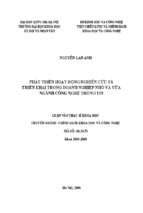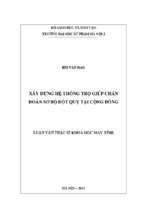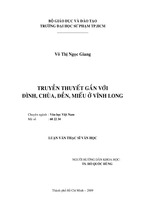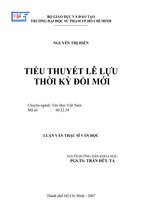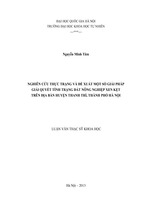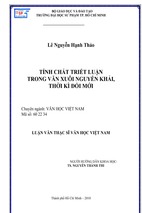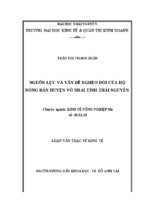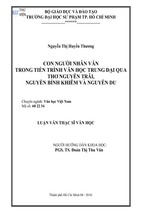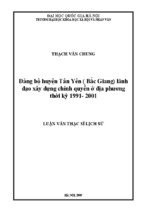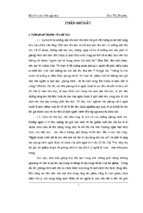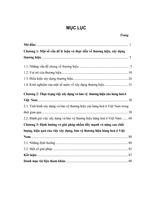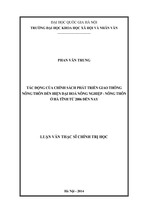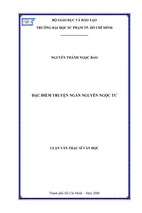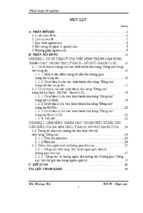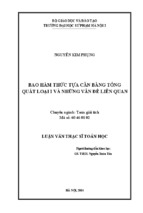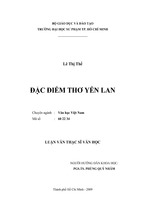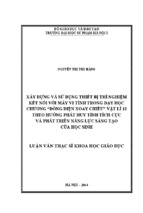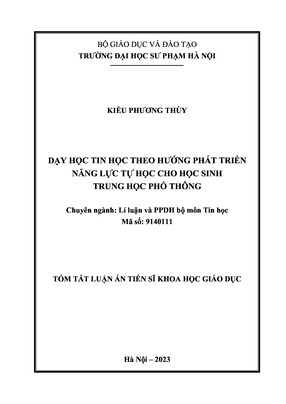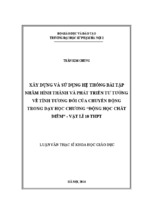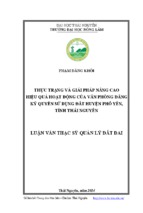VIETNAM NATIONAL UNIVERSITY, HANOI
UNIVERSITY OF LANGUAGES AND INTERNATIONAL STUDIES
FACULTY OF POST-GRADUATE STUDIES
---oOo---
PHẠM HỒNG TRANG
USING MULTIMEDIA TO IMPROVE ENGLISH LESSONS
FOR 5TH GRADERS AT AN ENGLISH ACADEMY
(SỬ DỤNG CÔNG NGHỆ ĐA PHƢƠNG TIỆN ĐỂ CẢI TIẾN GIỜ HỌC
TIẾNG ANH CHO HỌC SINH LỚP 5 TẠI MỘT HỌC VIỆN ANH NGỮ)
M.A. MINOR PROGRMME THESIS
Field: English Teaching Methodology
Code: 60140111
HANOI – 2017
VIETNAM NATIONAL UNIVERSITY, HANOI
UNIVERSITY OF LANGUAGES AND INTERNATIONAL STUDIES
FACULTY OF POST-GRADUATE STUDIES
---oOo---
PHẠM HỒNG TRANG
USING MULTIMEDIA TO IMPROVE ENGLISH LESSONS
FOR 5TH GRADERS AT AN ENGLISH ACADEMY
(SỬ DỤNG CÔNG NGHỆ ĐA PHƢƠNG TIỆN ĐỂ CẢI TIẾN GIỜ HỌC
TIẾNG ANH CHO HỌC SINH LỚP 5 TẠI MỘT HỌC VIỆN ANH NGỮ)
M.A. MINOR PROGRMME THESIS
Field: English Teaching Methodology
Code: 60140111
Supervisor: Assoc. Prof. Dr. Lâm Quang Đông
HANOI – 2017
DECLARATION
Title: “USING MULTIMEDIA TO IMPROVE ENGLISH LESSONS
FOR 5TH GRADERS AT AN ENGLISH ACADEMY”
I certify that no part of the thesis has been copied or reproduced by me from any
other works without acknowledgement and that the thesis is originally written by
me under strict guidance of my supervisor.
Hanoi, 2017
Student‟s signature
Phạm Hồng Trang
i
ACKNOWLEDGEMENTS
First of all, I would like to send my sincere and special gratitude to my supervisor,
Assoc. Prof. Dr. Lâm Quang Đông, who has given valuable assistance, guidance,
precious suggestions, advice, and reference materials to me so that I can complete
this thesis. The success of my paper would have been almost impossible without his
tireless support.
My thanks and gratitude also go to all professors and lecturers at Faculty of PostGraduate Studies, University of Languages and International Studies, Vietnam
National University, Hanoi for their valuable lectures.
I am also grateful to the manager of Smartcom center for his cooperation so that I
could fulfill my thesis better.
Last but not least, I would like to send my gratitude to my parents, all members in
my family and my friends for their support and encouragement during the process
of writing this thesis.
ii
ABSTRACT
Multimedia plays an important role in all stages of second language acquisition.
Multimedia has been considered an effective tool for enhancing English teaching
and learning process. The paper aims to study the use of multimedia for enhancing
the quality of English teaching and learning process at one English center in Hanoi
and investigate its effectiveness to the 5th graders at this center. In order to conduct
the study, three tools were used: (1) observation, (2) recording and (3) interview.
The findings show that learners in the center were very excited about the lessons
when multimedia was used. It also means that multimedia can support the teachers
in attracting the learners to the lesson. In other words, using multimedia brought
many benefits for not only learners but also teachers in the center. However, using
multimedia caused a couple of disadvantages. For example, the interaction of some
learners decreased when they used multimedia before class and it took the teacher
considerable amounts of time to prepare the lessons. Hopefully, the study can be a
useful source of reference for those teaching English to young learners.
iii
TABLE OF CONTENT
DECLARATION ........................................................................................................ i
ACKNOWLEDGEMENTS ....................................................................................... ii
ABSTRACT .............................................................................................................. iii
TABLE OF CONTENT ............................................................................................ iv
LIST OF FIGURES AND TABLES ......................................................................... vi
PART I: INTRODUCTION ........................................................................................1
1. Rationale .............................................................................................................1
2. Aims of the study ................................................................................................1
3. Research questions ..............................................................................................2
4. Methods of the study ...........................................................................................2
5. Significance of the study .....................................................................................2
6. Structure of the thesis ..........................................................................................2
PART II: DEVELOPMENT .......................................................................................4
CHAPTER 1: LITERATURE REVIEW AND THEORETICAL FRAMEWORK ...4
1.1.Learning styles of learners ................................................................................4
1.2.Teaching English to primary graders ................................................................5
1.3.Multimedia ........................................................................................................7
1.3.1.Definitions of terms....................................................................................7
1.2.2.Why should teachers use multimedia? .......................................................9
1.2.3. The use of multimedia in English teaching ...............................................9
1.2.4.Review of previous related studies ..........................................................10
1.3. Conceptual framework ................................................................................11
1.4. Chapter summary .........................................................................................12
CHAPTER 2: METHODOLOGY ............................................................................13
2.1. The setting of the study ..................................................................................13
2.2. The participants ..............................................................................................15
2.3. Research question revisited ............................................................................15
iv
2.4. Methods and instruments ...............................................................................16
2.4.1. Data collection instruments .....................................................................16
2.4.2. Data collection procedure .......................................................................17
2.5. Chapter summary ...........................................................................................31
CHAPTER 3: FINDINGS AND DISCUSSION ......................................................32
3.1. Data analysis ..................................................................................................32
3.1.1.Data from observation ..............................................................................32
3.1.2.Data from recording on the website .........................................................32
3.1.3.Data from interviews ................................................................................38
3.2. Findings and discussion .................................................................................39
3.3. Chapter summary ...........................................................................................41
PART III: CONCLUSIONS .....................................................................................42
1. Conclusions .......................................................................................................42
2. Limitations of the study ....................................................................................43
3. Suggestions for further research........................................................................43
REFERENCES ..........................................................................................................45
APPENDIX ................................................................................................................. I
v
LIST OF FIGURES AND TABLES
Figure 1.1
Elements of multimedia
8
Figure 2.1
The lesson in the first two hours
14
Figure 2.2
Research procedure
17
Figure 2.3
The name of the grammar lesson
18
Figure 2.4
The first slide of the language input
18
Figure 2.5
The second slide of the language input
18
Figure 2.6
The third slide of the language input
19
Figure 2.7
The fouth slide of the language input
19
Figure 2.8
The fifth slide of the language input
19
Figure 2.9
The sixth slide of the language input
20
Figure 2.10
The first activity of the practice
20
Figure 2.11
The first question in the first activity
20
Figure 2.12
The answer to the first question
21
Figure 2.13
The second activity of the practice
21
Figure 2.14
The first question in the second activity
21
Figure 2.15
The answer to the second question
22
Figure 2.16
The third activity of the practice
22
Figure 2.17
The first question in the third activity
22
Figure 2.18
The answer to the third question
23
Figure 2.19
The fourth activity of the practice
23
Figure 2.20
The first question in the fourth activity
23
Figure 2.21
The answer to the fourth question
24
vi
Figure 2.22
Table of English possessive adjectives and possessive pronouns
24
Figure 2.23
Language practice
25
Figure 2.24
Homepage of the website
26
Figure 2.25
One chapter of the story
26
Figure 2.26
The cover of the story
27
Figure 2.27
The first page of the story
27
Figure 2.28
Vocabulary practice 1
28
Figure 2.29
Grammar Practice 1
28
Figure 2.30
Listening practice
29
Figure 2.31
Speaking card
29
Figure 2.32
Submission of one learner
30
Figure 2.33
Feedback by recording
30
Figure 3.1
Performance report 1
33
Figure 3.2
Performance report 2
33
Table 3.1
Relationship between learners‟ using website at home and their
interaction in class
34
Table 3.2
Content of the feedback on the website
34
Table 3.3
Speaking card of one story on the website
35
vii
PART I: INTRODUCTION
1. Rationale
English is one of the most widely used languages in the world. It is the reason why
many parents in Vietnam are willing to invest in their children‟s English education
in order to ensure a better future for their children in this increasingly globalized
world. Teaching English to young learners, however, is not always easy. My own
teaching experience shows that three following common problems make children‟s
English learning in class ineffective. Firstly, the classes are not really attractive
because they are basically about grammar. It can easily make children feel bored
and hard to acquire the language. Secondly, children have no motivation. Normally,
adults study English to have better jobs or better lives while children are not
conscious of that, so they have no inspiration to study English. Thirdly, they lack an
interactive environment. An interactive environment is one of the most important
things for children to practice English efficiently.
Smartcom Academy1, the English center chosen for this study, is not an exception
when the class time does not really attract one hundred percent of children‟s
attention. To address such problems, using multimedia in teaching English seems to
be one of the best solutions to improve English lessons for children. Therefore, I
want to use the multimedia to see how effective it is for children, especially 5th
graders in Smartcom.
2. Aims of the study
The research aims to enhance the quality of English teaching and learning process
in Smartcom Academy, particularly the 5th graders‟ English in this center by using
multimedia.
1
The researcher managed to obtain the center‟s consent to use its real name, as provided in the Appendix.
1
3. Research questions
In order to achieve the aim above, the study focuses on answering the research
question: How effective is the use of multimedia in teaching and learning English to
5th graders in Smartcom Academy?
4. Methods of the study
Action research is chosen for the study. As its name suggests, action research has
two targets: action and research. Action is to bring about change or improvement in
a specific teaching situation; and research is to examine the practice and understand
the situation (Dick, 1992; Hughes & William, 2001). These are appropriate to my
present study which is to plan and perform an intervention using multimedia to
change the traditional teaching situation.
In order to find out the answer to the research question, I conducted the study in six
stages: planning, acting, observing, recording, interviewing and data analyzing.
5. Significance of the study
The study is carried out with the first hope that it can improve English learning
outcomes in Smartcom Academy in particular and in other English centers in
Vietnam in general. Another possible contribution of the study is that it can provide
a better way of English teaching, especially English teaching for primary graders
through multimedia to create an interactive environment instead of traditional
grammar classes.
6. Structure of the thesis
The thesis is organized as follows:
PART I: INTRODUCTION - introduces the rationale; aims of the study; research
questions; methods of the study; significance of the study; and the thesis structure.
PART II: DEVELOPMENT – the main part of the study, consists of three chapters:
Chapter 1: LITERATURE REVIEW AND THEORETICAL FRAMEWORK –
2
reviews and presents relevant theories and studies to the study. Chapter 2:
METHODOLOGY – describes the setting of the study, the participants, research
question, methods and instruments. Chapter 3: FINDINGS AND DISCUSSION –
presents an analysis of the data and discusses the findings of the study.
PART III: CONCLUSIONS – summarizes the study, limitations of the study and
suggestions for further research.
3
PART II: DEVELOPMENT
CHAPTER 1: LITERATURE REVIEW AND THEORETICAL
FRAMEWORK
English language education has changed dramatically in recent decades all over the
world. In different countries, especially those in the Expanding Circle (Kachru,
1991), a large number of parents want their children to start to learn English early. It
is crucial for language educators to understand children‟s psychological
development at different ages and have an accurate concept of approaches to
language teaching and teaching aids in use. This chapter reviews and presents the
current understanding of second language teaching to primary graders, and the use
of multimedia in English teaching. The theoretical framework upon which the study
relies is also presented.
1.1.
Learning styles of learners
According to studies of professors and Neuro-linguistic programming specialists,
learners receive information through five senses including three main ways: visual,
auditory and kinesthetic. These three ways form learning styles for each learner.
1.1.1. Visual: learners prefer using pictures, images, and spatial understanding.
1.1.2. Auditory: learners prefer using sound and music.
1.1.3. Kinesthetic: learners prefer using your body, hands and sense of touch.
According to Dunn and Dunn (1978), only 20-30% of school age children appear to
be auditory learners, 40% are visual learners, and 30-40% are tactile/kinaesthetic or
visual/tactile learners. Barbe and Milone (1981) stated that for grade school children
the most frequent modality strengths are visual (30%) or mixed (30%), followed by
auditory (25%), and then by kinaesthetic (15%). Barbe and Milone (1981) stated
that primary grade children learn better via auditory (verbal) means and are least
well developed kinaesthetically, however between kindergarten and sixth grade a
4
modality shift occurs and vision becomes the dominant modality and kinaesthesia
overtakes audition (Barbe & Milone, 1981). Barbe and Milone (1981) also wrote
that adults are more likely to have mixed modality strengths than children. In
addition, it has been found that modality strengths differ with regard to achievement
level. Price, Dunn, and Sanders (1980) found that very young children are the most
tactile/kinesthetic, that there is a gradual development of visual strengths through
the elementary grades, and that only in fifth or sixth grade can most youngsters
learn and retain information through the auditory sense. Carbo (1983), investigating
the perceptual styles of readers, found that good readers prefer to learn through their
visual and auditory senses, while poor readers have a stronger preference for tactile
and kinesthetic learning.
In a classroom environment students with limited English proficiency rely heavily
on visual clues for the comprehension and acquisition of learning content (Olmeda,
2003). In a study on perceptual learning styles and achievement in a university level
foreign language course, Renou (2004) found out that there is no significant
difference between the predominant learning style groups and course graders. In
other words, whether one is a visual, auditory, or kinesthetic learner, this has no
significant bearing on achievement in school as measured by grades. In their
research, Kia, Alipour, and Ghaderi (2009) found that among students in Payame
Noor University in Iran, those with visual learning style have the greatest academic
achievement. Peacock (2001) has examined the learning style preferences of EFL
and ESL students. The results of these studies show that students prefer kinesthetic
learning styles above others, whereas the teaching methods mostly suit auditory
learners.
1.2.
Teaching English to primary graders
As English becomes the world‟s common language, many countries all over the
world have utilized English language instruction as a part of their education system.
5
Many countries choose the primary level to begin teaching English, and students are
studying the language at younger and younger ages (Jenkins, 2009).
Diana et al. (1999) asserted:
The purpose of teaching English in the primary school is to develop pupils‟
abilities to communicate effectively in speech and writing and to listen with
understanding. It should also enable them to be enthusiastic, responsive and
knowleadgeable readers‟ (National Curriculum Order for English, 1995).
Such communication is central to society, and the media encompass this in
their everyday functions. In other words, the raison d‟être of the media is
communication, and to this end a rich tapertry of literacies are employed
which reflect and shape society. (p.169)
Teaching English to young learners at primary school is different from that to
adults. English teachers at primary schools, therefore, need to master the theories of
language teaching-learning to primary graders.
In this case, the teachers must completely understand the concept of language
acquisition and learning. Language acquisition is a process of getting language
naturally or sub-consciously. Krashen and Terrell (1983) state that acquiring a
language is “picking it up”. It means that developing language ability by accessing
to it regularly in daily situations. On the contrary, language learning is a process of
getting language consciously. Language learning is “knowing the rules”. In other
words, learning is getting conscious knowledge about grammar. Teaching English
to primary graders should require context in which children can acquire language by
acquisition rather than learning.
Teaching foreign language effectively to children needs specific skills that differ
from teaching adults. It is important to consider four categories proposed by Brown
(2001). They are as follows:
6
a.
Intellectual Development
b.
Children understand something concrete. It means that teachers should avoid
grammar rules because they include abstract terms.
c.
Attention span: It is known that children have short attention spans. Therefore,
activities should be designed lively to capture children‟s interest.
d.
Sensory input: In the matter of sensory input, multimedia can be an effective
means of teaching English to young learners. It can help teachers make classroom
situations more alive.
1.3.
Multimedia
1.3.1. Definitions of terms
The following terms are defined specifically because they occur frequently and
repeatedly in the study.
1.2.1.1. Multimedia
The word “media” comes from Latin (Oxford2). Accordingly, “multimedia” could
be called multiple media. There are various definitions of multimedia. According to
Cambridge dictionary, multimedia is a “combination of moving and still pictures,
sounds, music, and words, especially in computers or entertainment”. Multimedia is
defined in Oxford dictionary as “using more than one medium of expression or
communication”. Marshall (1999) states, “multimedia is the field concerned with
the computer-controlled integration of text, graphics, drawings, still and moving
images (video), animation, audio, and any other media where every type of
information can be represented, stored, transmitted and processed digitally”.
According to Mayer (2001), multimedia simply presents both words and pictures.
In short, basic elements creating multimedia are shown as below:
2
Retrieved August 7 2017, from https://en.oxforddictionaries.com/definition/media
7
Video
Text
Audio
Multimedia
Animation
Graphics
Figure 1.1. Elements of multimedia
In this study, multimedia refers to multimedia materials used for improving English
lessons for the children. The materials include the content from Power Point
Presentations and Storytelling website.
1.2.1.2.
Power Point Presentation
PowerPoint is a presentation program developed by Microsoft. PowerPoint is “a
software package designed to create electronic presentations consisting of a series
of separate pages or slides” (Oxford dictionary3). As a part of Microsoft Office,
PowerPoint has become widely used presentation program. PowerPoint is
considered an effective pedagogical tool in classroom when it integrates images,
graphics, text, sound, animation and hyperlinks to other documents. They allow
users to make animated and interactive presentations. According to Bozarth (2008),
interactivity is very necessary to support instruction.
1.2.1.3.
Storytelling website
Storytelling is an “activity of telling or writing stories” (Oxford dictionary4).
According to Pesola (1991, p.340), storytelling is “one of the most powerful tools
3
4
Retrieved August 7 2017, from https://en.oxforddictionaries.com/definition/powerpoint
Retrieved August 7 2017, from https://en.oxforddictionaries.com/definition/storytelling
8
for surrounding the young learner with language”. Accordingly, storytelling can
improve their four language skills (Wilson, 1997). Storytelling seems to be a
practical and powerful teaching tool, especially for language learning.
Similar to PowerPoint, storytelling website also integrates texts, graphics, sounds,
animation, and so on to create an interesting and lively foreign language learning
environment.
1.2.2. Why should teachers use multimedia?
It is important for teachers, especially primary teachers, to recognize that
multimedia plays a significant role in children‟s lives. Children cannot “escape
exposure to the technology revolution which generates so much information and so
many ideas, nor should they” (Diana et al., 1999).
The teaching of English is concerned primarily with communication via the written
and spoken word, and thus, it is obvious that excluding multimedia from the
primary English curriculum will prevent children from accessing a significant
language resource “which is representative of a high proportion of society‟s
communication” (Diana et al., 1999).
In short, the teacher should take advantage of multimedia to help the children have
better language development.
1.2.3. The use of multimedia in English teaching
The common use of multimedia can bring a big change for people in sending,
receiving and expressing information. Pea (1991) states:
Multimedia functions to help students for several reasons, among them are:
first, it is much better that written text so that student can understand the
material well. Second, it provides the context for the abstract word or
explanation such as different emotion on human face. Third, it may overcome
9
the individual needs and preference so that students can learn the material
accordingly. (p.2)
Lin & Chen (2007) thought that multimedia is beneficial for foreign language
learners. Joshi (2012) showed in his study that using multimedia in classroom
supported learners in enhancing their language acquisition.
The new function of multimedia led the programmer to develop new softwares for
teaching and learning process. A more interactive program such as story, animation
and games has grown in the last decade. Interactive video discs, CD-ROM, and CDI become more accessible to teachers and learners. Multimedia allows integration of
texts, graphics, audio, and motion videos in a range of combinations. As a result,
learners can interact with textual, aural, and visual media in a wide range of
formats. In brief, there are a diversity of multimedia uses in teaching. Teachers
should consider the suitable form of multimedia to learners‟ objectives so as to
achieve better results.
1.2.4. Review of previous related studies
The roles of multimedia and its effectiveness in English teaching have been the
subject of many studies. Recently, Rostami, Akbari and Ghanizadeh (2015) studied
the
effect
of
environments
technology-enhanced
on
learners‟
reading
comprehension ability in Smart schools. The population in this study consisted of
124 female students in the first grade of two different high schools. Smart board,
Power Point Presentation and World Wide Web were used as multimedia tools in
this study. The results presented that this application had a positive and significant
influence on learners‟ reading comprehension ability and on the retention of reading
materials.
Another study by Shao (2012) aimed to examine the use of multimedia software to
vocabulary acquisition. It explored the effectiveness of multimedia application in
Chinese English as a foreign language (EFL) learners and the learners‟ attitudes
toward multimedia application as well. The participants were 80 freshmen students
10
in China. The results revealed that students had highly positive attitudes to the
application of multimedia software. The results also showed the effectiveness of
multimedia software to the development of vocabulary acquisition.
Al-Hammadi (2011) had a quasi-experimental study to research the effectiveness of
multimedia software for developing listening skills among EFL Saudi secondary
school students. The study showed that the software was useful to the development
of students‟ listening skills.
Junjula, Leksirilak and Kaewpradidt (2010) developed multimedia on English
vocabulary for sixth grade Thai learners. The results indicated that the learners‟
achievement after learning with multimedia was much higher.
Abdurrahman (2006) investigated the effect of Computer Assisted Language
Learning (CALL) on 83 learners with the age of 11 to 13 years old in the UAE. The
instrument was a pre- and post-achievement test. The results proved that CALL had
a positive effect on English learning.
In short, relevant studies above show that multimedia seems to be an effective tool
in teaching English to every age. Thus, the present study was conducted with the
aim to see whether multimedia has effects on teaching English to the fifth graders at
Smartcom or not.
1.3.
Conceptual framework
According to Mayer (2003), the rationale for using multimedia is that “people learn
more deeply from words and picture than from words alone” (p47). In other words,
the main purpose of multimedia is to improve teaching – learning process. Hence,
using multimedia in class needs to be based on approaches to teaching and learning.
Constructivism theory and cognitive psychology are two conceptual frameworks of
multimedia in English teaching.
Constructivism is a learning theory which interprets how people can acquire
knowledge. The theory suggests that learners construct knowledge from their
11
- Xem thêm -


